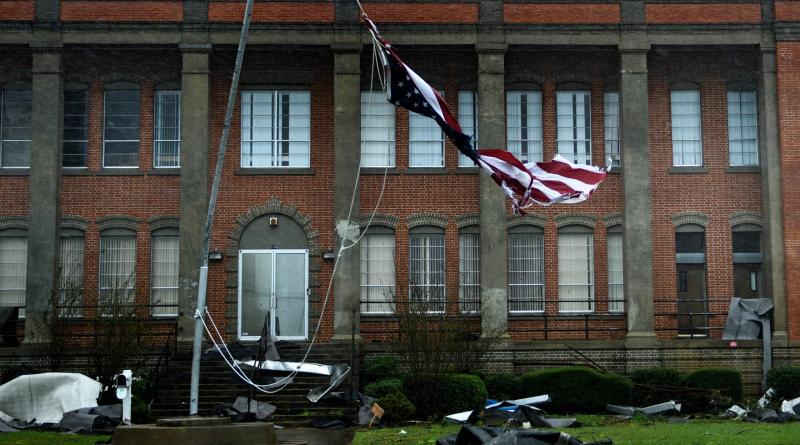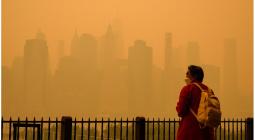As Extreme Weather Batters Schools, Students Are Pushing For More Climate Change Education

In the U.S. and around the world, the impact of climate change on primary education is becoming increasingly difficult to ignore, both inside and outside the classroom. As heat and flooding threaten the physical environment, pedagogical—and political—debates rage over how and what to teach students about their rapidly warming planet.
Often a reflection of the political majority in a state, climate curriculums vary across public schools in the U.S., and now students themselves are advocating for more climate change education. However, these efforts have been met with mixed responses from school boards and state legislatures.
Today, I am diving into the student-led push to expand climate change instruction across classrooms as schools struggle against the most severe climate impacts.
Buckling Under the Elements: While “snow days” in some parts of the country have decreased due to shorter winters, other weather-related school cancellations have surged, from “wildfire days” in California to “it flooded so badly that sewage is spilling onto the street” days (that may not be the official name for them, but you get the gist).
The latter hit Leaders High School in south Brooklyn in September, when several inches of rain overwhelmed sanitation infrastructure around the school, writes Mariana Simões for City Limits. A report from NYC’s Comptroller’s Office shared with City Limits found that 28 percent of the city’s public school buildings are vulnerable to extreme stormwater flooding, and that many of them don’t have updated infrastructure to handle a deluge.
In some cases, particularly extreme climate-fueled weather events can keep children out of class for weeks, such as Hurricane Michael in Florida, which devastated schools across the Florida Panhandle in 2018 and kept around 45,000 students from their classrooms during recovery.
But for many schools, a chief climate concern is the lingering and almost constant threat of heat. At the start of the school year in 2023—which scientists confirm is the warmest year in modern history—many students baked inside classrooms with little to no air conditioning, reports Wired. These high temperatures affect learning at a physiological level: Along with impacting a student’s mental health, heat causes the body to sweat, diverting blood from organs toward the skin. This can reduce oxygen in some of the body’s tissues, including the brain, which can disrupt a child’s cognition and ability to focus, research shows.
This poses an environmental justice issue as students all around the world are struggling to beat the heat. Over the past month, a deadly heat wave has blanketed Southeast Asia, forcing governments to shut down schools and further widening the education gap in low-income countries, reports CNN.
Climate Change Education Is a Mixed Bag: In the U.S., students are speaking out to learn more about the source of the climate impacts hitting their schools. But their efforts haven’t always been met with support.
In February, dozens of high school and college students attended a hearing in the Minnesota Capitol in St. Paul to advance a bill that would require schools to integrate climate change into their curriculums, the Associated Press reports. However, the bill was not moved forward, similar to one that New Hampshire high schoolers were advocating for in March that is now indefinitely stalled.
Oftentimes, classroom materials do not reflect current climate science. In August, Republican Gov. Ron Desantis approved a move which allows classrooms to show videos that reject the reality of climate change. Several recent studies show that while science textbooks discuss climate change, they have not kept pace with the body of new research on the subject, a trend that my colleague Kiley Bense reported on last year.
In a recent investigation, Rolling Stone magazine and Drilled revealed that the oil and gas industry has given funding to push forward corporate goals into lesson plans produced by Discovery Education, a textbook and multimedia education provider used by half the classrooms in the U.S. In one of their lessons, which includes a logo from oil and gas lobbying organization the American Petroleum Institute, the plan advises teachers to “tell the class that in 2020, petroleum powered 90 percent of the country’s transportation.” It does not include any mention of renewable energy or climate impacts from oil-related emissions, the news outlets found.
However, other states have embraced climate change curriculums across public schools. In 2020, New Jersey became the first state to require teaching climate change at all grade levels in all subjects, from art class to physical education. Since the program began, many teachers have focused on helping kids connect with nature and brainstorm climate solutions, reports The New York Times.
“When we shield them from so much, they’re not ready to unpack it when they learn about it, and it becomes more scary than when they understand they’re in a position where they can actively think about solutions,” Lauren Madden, a professor of elementary science education at the College of New Jersey, told the Times. “When you take kids seriously that way, and trust them with that information, you can allow them to feel empowered to make locally relevant solutions.”
Multiple states have followed New Jersey’s lead by implementing their own climate education measures, including Connecticut and California, according to the National Center for Science Education. However, as climate impacts continue to ransack schools around the world, experts say education efforts have a long way to go.





